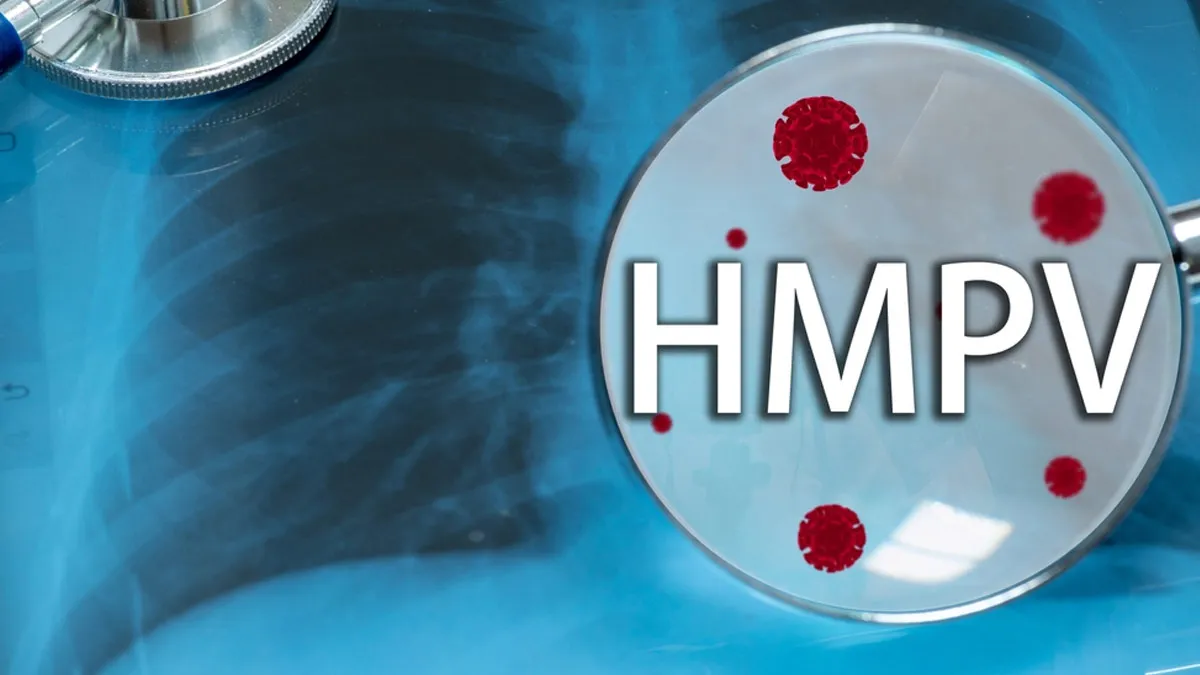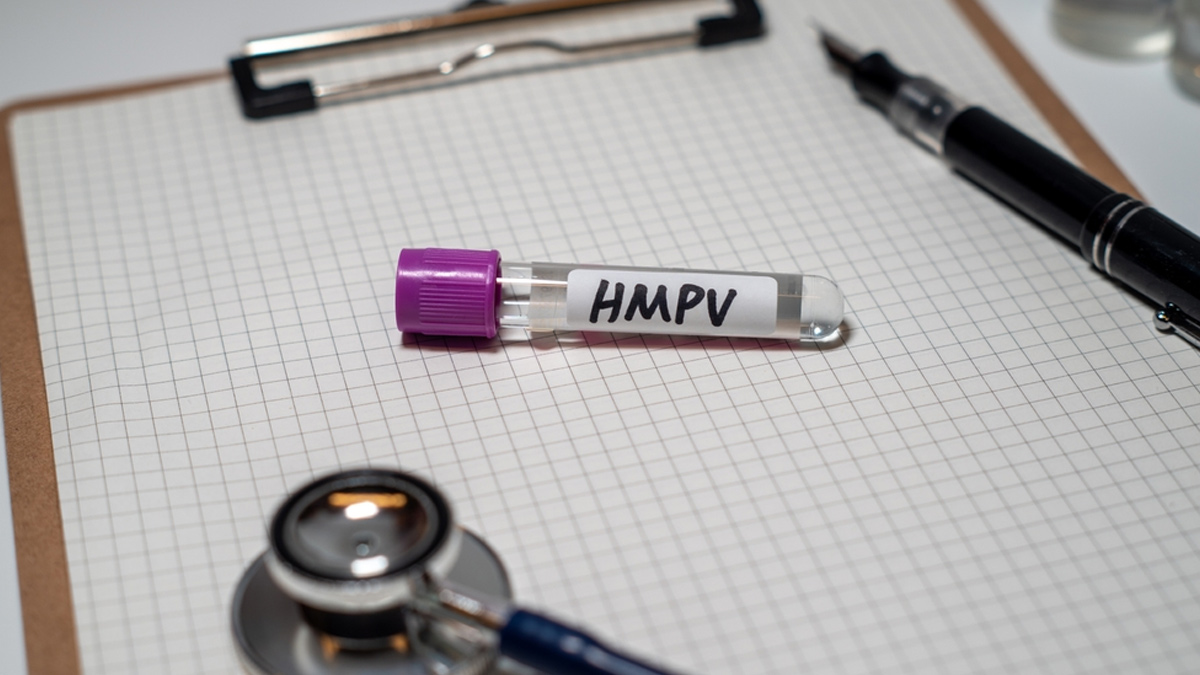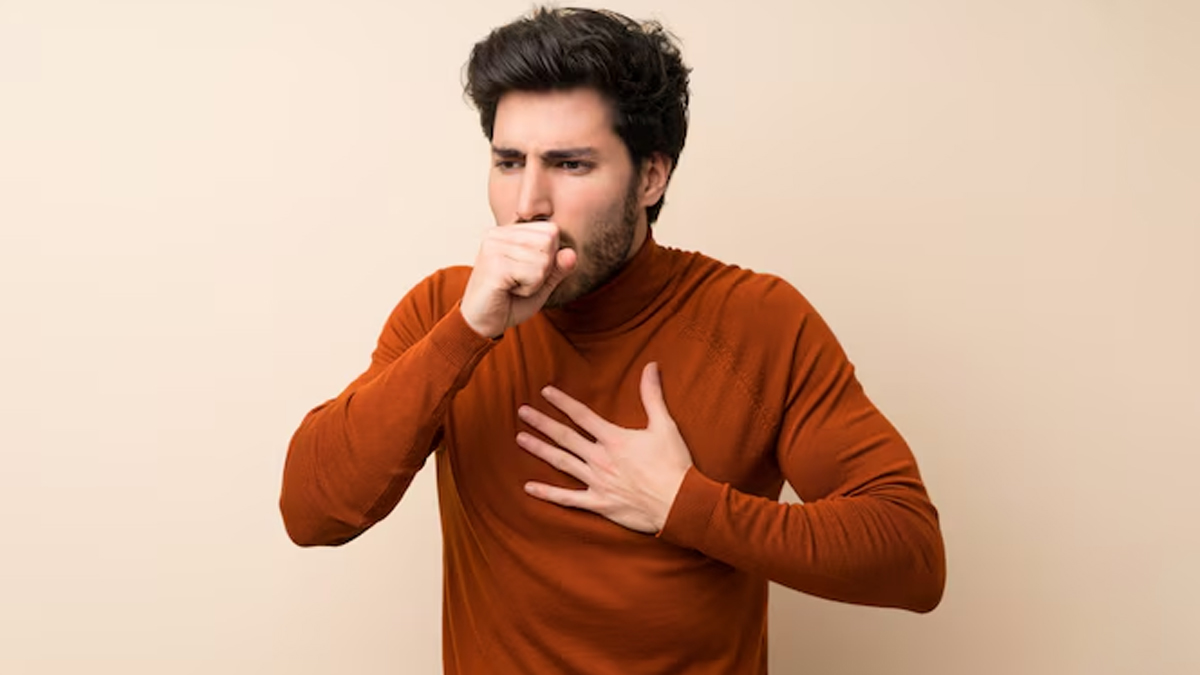
When the cold and flu season hits, there’s a lot to worry about, and one infection that might fly under the radar is Human Metapneumovirus (HMPV). It is a respiratory infection that can lead to illnesses ranging from mild cold-like symptoms to more serious conditions, such as pneumonia. It’s most common in children, the elderly, and those with weakened immune systems. We spoke to Dr Rituja Ugalmugle, Internal Medicine, Wockhardt Hospitals, Mumbai Central, who explained everything you need to know about HMPV and how to stay safe.
Table of Content:-
What is Human Metapneumovirus (HMPV)?

"Human Metapneumovirus (HMPV) is a respiratory virus that belongs to the Paramyxoviridae family, which includes other respiratory viruses like RSV. It causes illnesses ranging from mild cold-like symptoms to severe respiratory infections, such as bronchitis or pneumonia," explained Dr Ugalmugle. HMPV is prevalent worldwide and affects all age groups but is most severe in children, the elderly, and those with weakened immune systems.
According to a 2023 study, HMPV was initially identified in children during episodes of bronchiolitis and acute asthma exacerbations, as well as in severe lower respiratory tract infections, particularly among immunocompromised children. In adults, hMPV has been found in flu-like syndromes. Recently, the widespread use of PCR respiratory panels in ICU patients has resulted in more frequent detection of HMPV.
What are the Symptoms of HMPV?
The symptoms of HMPV can differ greatly, depending on the severity of the infection and the person's general health. Here are some signs listed by Dr Ugalmugle:

Common mild symptoms include:
- Cough: Often persistent and can range from mild to severe.
- Runny nose: A common sign of upper respiratory involvement.
- Nasal congestion: Resulting in difficulty breathing.
- Sore throat: Often accompanied by discomfort and irritation.
In more severe cases, symptoms can escalate to:
- Fever: Often present in the initial stages of infection.
- Shortness of breath: Difficulty breathing may arise, especially in the elderly and those with pre-existing lung conditions.
- Wheezing: A sign of narrowing of the airways, often associated with severe respiratory distress.
- Difficulty breathing: This is a more severe symptom and can indicate a serious infection, such as bronchitis or pneumonia, especially in young children and older adults.
HMPV is a prevalent infection among adults of all ages. While it is often asymptomatic, it can lead to severe illness in some cases that necessitates hospitalisation, as stated in the JAMA Network
According to studies from North America, it was found that 25-33% of HMPV cases occurred in children with preexisting conditions, including prematurity, cardiopulmonary issues, and immunosuppression.
Also Read: Human Metapneumovirus Detected in China: The Next Health Alert After Coronavirus?
What Causes a Metapneumovirus Infection?
"HMPV infections are caused by exposure to the virus, a microscopic organism that replicates by invading and using the body’s cells, which predominantly target the respiratory tract. The virus is spread in several ways, such as droplets, direct contact with an infected person, or touching contaminated surfaces," said Dr Ugalmugle.
How is Human Metapneumovirus (HMPV) Transmitted?
HMPV spreads through a variety of mechanisms, making it highly contagious. The virus is most contagious during the initial few days of illness when symptoms peak. The primary modes of transmission include:

- Respiratory droplets: When an infected person coughs, sneezes, or talks, they release respiratory droplets into the air, which can be inhaled by others.
- Direct contact: The virus can survive on surfaces for some time, and when a person touches these surfaces and then touches their face, the virus can enter their body.
- Close contact: Prolonged close contact, such as hugging, kissing, or being in the same room as an infected person, increases the chances of transmission.
According to the American Lung Association, HMPV can affect the upper and lower respiratory systems in individuals of all ages. However, it is most commonly observed in young children and the elderly, where it is more likely to lead to conditions like bronchiolitis, bronchitis, or pneumonia.
How is HMPV Diagnosed?
To diagnose HMPV, healthcare providers rely on clinical evaluation and laboratory tests. Here are some listed by the expert:

- Clinical evaluation: The healthcare provider will assess symptoms and review the patient's medical history. If the patient presents with typical respiratory symptoms, HMPV infection may be suspected.
- Laboratory tests: The most common tests include:
a. Polymerase Chain Reaction (PCR): This test detects the genetic material of the virus in samples taken from the patient's throat or nose. It is highly accurate and can confirm the presence of HMPV.
b. Viral cultures or antigen detection: These methods involve taking a sample from the nasal or throat swabs and growing the virus in the lab to confirm its presence.
How is Human Metapneumovirus Treated?
According to the Centers for Disease Control and Prevention (CDC), the incubation period is typically between 3-6 days, and the duration of illness can vary based on the severity, but it is generally similar to other viral respiratory infections.
HMPV does not currently have a specific antiviral treatment. Treatment focuses on managing the symptoms and supporting the patient’s recovery. Dr Ugalmugle listed some common treatment strategies as follows:

- Rest and hydration: Ensuring the body gets enough rest and fluids is essential for recovery.
- Medications: Over-the-counter medications, such as acetaminophen or ibuprofen can help alleviate fever and pain, while decongestants or saline sprays can relieve nasal congestion.
- Severe cases: In cases of severe infection, particularly among high-risk individuals, hospitalisation may be required. Oxygen therapy or mechanical ventilation may be necessary if breathing becomes severely compromised.
Also Read: Understanding RSV In Children, Know Its Symptoms And Causes
How To Protect Yourself From HMPV?
Follow these expert-recommended measures to prevent HMPV:
- Make hygiene a priority by regularly washing your hands with soap and water or using hand sanitiser.
- Wear a mask in crowded or poorly ventilated areas to reduce exposure to airborne pathogens. Boost immunity through a balanced diet rich in vitamins, adequate hydration, and regular exercise. Avoid close contact with individuals showing symptoms, and ensure your living spaces are well-ventilated.
- Regularly disinfect frequently touched surfaces like doorknobs and phones.
- Stay informed about vaccination schedules and follow healthcare guidelines to strengthen defences.
Frequently Asked Questions (FAQs)
How serious is Metapneumovirus?
HMPV is generally mild but can be serious in high-risk groups, such as infants, the elderly, and those with chronic health conditions. Severe infections can lead to complications like bronchitis or pneumonia.
How long does HMPV last?
Symptoms of HMPV typically last 7-10 days, with some residual symptoms like a cough lingering for a few weeks. Severe cases may take longer to recover, depending on the individual’s overall health.
[Disclaimer: This article contains information provided by an expert and is for informational purposes only. Hence, we advise you to consult your professional if you are dealing with any health issues to avoid complications.]
Also watch this video
How we keep this article up to date:
We work with experts and keep a close eye on the latest in health and wellness. Whenever there is a new research or helpful information, we update our articles with accurate and useful advice.
Current Version